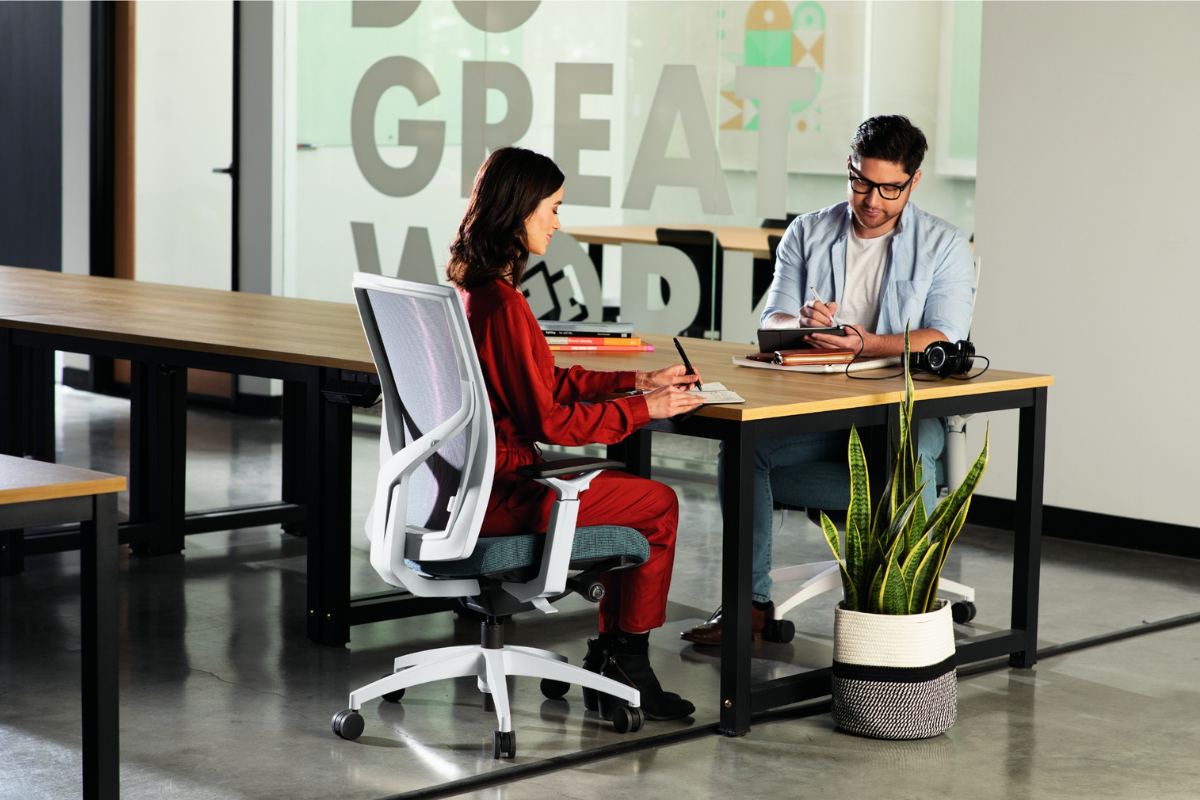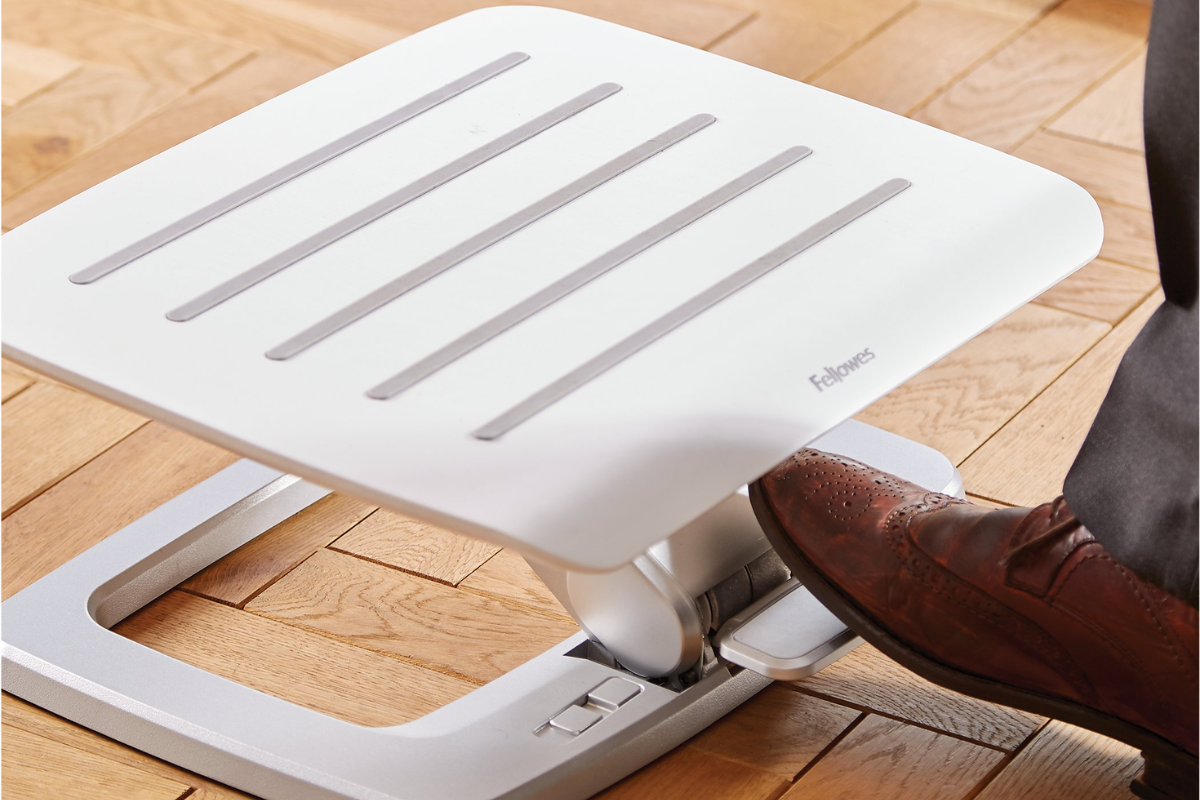
11 Tips to Stay Healthy While Working at a Desk All Day
In this digital age many of us spend most of our working hours sitting at a desk staring at computer screens. While this is the norm it can take a toll on our physical health over time. But with a bit of conscious effort and simple changes to our lifestyle we can stay healthy even if we work at a desk all day. In this post we’ll explore 10 practical tips to keep you feeling healthy and energized throughout your day, highlighting the benefits of an ergonomic workspace.

Tip 1: Ergonomic Workspace Setup
Start by setting up your ergonomic workspace to promote good posture and reduce strain. Adjust your chair so your feet are flat on the floor and your knees are at 90 degrees. Position your monitor at eye level to avoid neck strain and keep your arms and wrists relaxed while typing.
Tip 2: Take Breaks
Sitting for long periods can lead to stiffness and discomfort. Take regular breaks throughout the day to stand up, stretch or take a short walk. Consider using a timer or productivity app to remind you to take breaks every hour or so.

Tip 3: Hydrate All Day
Staying hydrated is key to overall health. Keep a water bottle at your desk and sip water regularly to prevent dehydration and optimal body function. There are water bottles that have markers on them with how much you should be drinking with in the hour of a day. There are also water bottles out there that are paired up with technology that can send you reminder on your phone.
Tip 4: Pack Healthy Snacks
Avoid vending machine junk food by packing healthy snacks like fruits, nuts and yogurt. Healthy snacks give you sustained energy and prevent the 2pm slump. On top of this bringing your own healthy lunch to work has some benefits, some examples are focus, energy levels, productivity, and your stress levels.
Tip 5: Get a Standing Desk
If possible get a standing desk or a sit-stand converter. Alternating between sitting and standing throughout the day can improve circulation, reduce the risk of certain health issues and feel more energized. If you have a smartwatch they will often tell you that it is time to stand up, having your smartwatch with you in the office can tell you when it is time to use your standing desk.
Tip 6: Walk or Bike to Work
If your workplace is within walking distance opt to walk or bike instead of driving or taking public transport. This simple change can incorporate physical activity into your daily routine and boost your cardiovascular health and mood. This helps with all kinds of health benefits and is a good way to reduce stress.

Tip 7: Use Your Lunch Break Wisely
Instead of spending your entire lunch break sitting at your desk use this time to go for a walk outside, do a quick workout or some stretching exercises. Not only will it benefit your physical health but also your mental clarity and productivity.
Tip 8: Prolonged Sitting Risks
Prolonged sitting can have severe consequences on our overall health and wellbeing. When we sit for extended periods our bodies are not designed to be in a static position for so long and can lead to muscle cramps, back pain and decreased physical activity. According to studies prolonged sitting can increase the risk of heart disease, diabetes and certain types of cancer. Sitting for long periods can also affect our mental health leading to decreased energy levels, mood swings and emotional distress. Understanding these risks is the first step to making healthier choices throughout the day.

Tip 9: Desk Exercises and Stretching
To combat the risks of prolonged sitting incorporating desk exercises and stretching into your daily routine can be very beneficial. Simple exercises like desk pushups, chair squats and leg raises can increase physical activity and reduce muscle cramps. Stretching exercises like arm circles, shoulder rolls and wrist extensions can improve flexibility and reduce the risk of injury. By doing these exercises daily you can improve your overall health and wellbeing even if you work at a desk all day.
Tip 10: Good Posture
Good posture is key to reducing the risks associated with prolonged sitting. When sitting at your desk make sure your feet are flat on the floor or on a footrest, with your knees at or below hip level. Keep your back straight, shoulders relaxed and head at eye level. Avoid slouching or leaning forward as this can put strain on your neck, shoulders and back. By keeping your feet flat on on the floor or using a foot rest, and good posture you can reduce the risk of back pain, muscle cramps and other musculoskeletal disorders.

Tip 11: Emotional Health and Well Being
Managing emotional wellness is key to overall wellbeing especially when working at a desk for extended periods. Take short breaks to meditate, practice deep breathing exercises or do some physical activity to reduce stress and anxiety. Set boundaries, prioritize tasks and take time off when needed to manage your health. By prioritizing your health, weather that physical or mental or emotional, you can reduce the risk of burnout, improve mood and increase overall wellbeing.
Conclusion
Working at a desk all day requires effort but the rewards are worth it. Create an ergonomic space, take breaks, do exercises, keep good posture and you will be better. Remember to hydrate, eat healthy snacks and use your lunch break wisely. Small changes can make a big difference in how you feel physically and mentally and help you thrive at your desk job.


